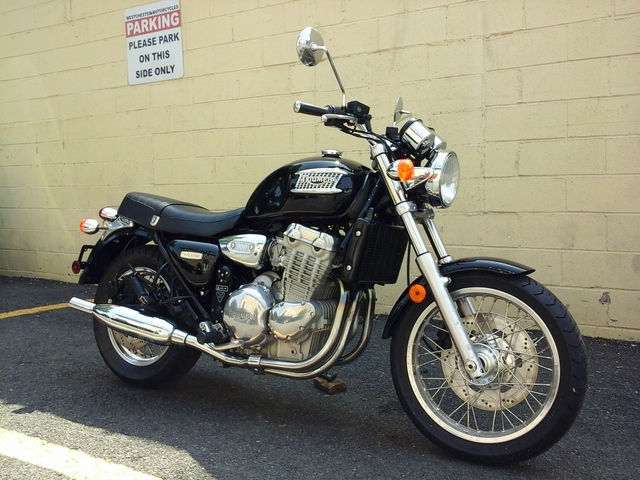

Twin 310mm discs, Nissin 4-piston calipersįrom 2009 until the end of the Thunderbird line (for now) in 2018, the Thunderbirds have been parallel twin-powered cruisers.

Here’s a quick summary table of the modern Triumph Thunderbird motorcycles: Model Things changed when Triumph reinvigorated the Thunderbird brand from mid 2009 with the new bike powered by a twin and endowed with a more relaxed riding position. The bike was still heavy, but a lot feistier. Triumph added a lot more Sport to the 900 with the Thunderbird Sport in 1998. It handles more lazily than its sportier competition, like its own stablemate the Triumph Speed Triple, and is quite heavy with a wet weight of around 238 kg (525 lb). It has a modestly sporty engine, but only a single 320mm disc up front with a 2-piston caliper, non-adjustable forks, and a 16-inch rear tyre. The 1995-2004 Triumph Thunderbird 900 is a relaxed “roadster”, in modern terms. The first Triumph Thunderbird of the modern era was a triple, and is so different to the others that it doesn’t make sense to have it in a comparison table, as the others have so much in common. In 1995, the now Bloor Holdings-owned Triumph company launched a Thunderbird - the Triumph Thunderbird 900. The Triumph Thunderbird motorcycles used to be standards, but eventually evolved into foot-forward, floorboard-equipped cruisers like the Triumph Thunderbird LT. Then when the cooperative also went into receivership, the Thunderbird took a nap. It was first made as a 650cc parallel twin from 1949 to 1966, then re-made from 1981-1983 (by the workers cooperative that bought out the failed Triumph company) as a twin based on the T140 Bonneville. This is a quick guide to the Hinckley era of Thunderbird motorcycles.īefore the Hinckley era, Triumph made “Thunderbird”-branded motorcycles a number of times. Please enable JavaScript in your browser to submit the form Triumph Thunderbird Motorcycles - In A Nutshell Like many standards and cruisers, the differences are subtle, so the following is a brief guide to the modern Triumph Thunderbirds made at the Hinckley factory. Of course, everyone associates Triumph with the Bonneville, and then perhaps with the Speed or Tiger family, or maybe some other of the middleweight/1200-size twins, depending on your poison of choice.īut Triumph has been in the cruiser game for a long time, and the Thunderbird brand is so strong that it has been revived a few times - and probably will be again.Ī few of these Thunderbird motorcycles look similar, even to attentive viewers. The Triumph Thunderbird has always been a little outside the mainstream of Triumph’s motorcycle core brand. Then there was a reinvention again in 2009, repurposing the Thunderbird brand as a cruiser! Those days are long gone, and the only thing the motorcycles have in common (aside from the name) is that they have fewer than four cylinders and are very easy on the eye.īut Triumph reintroduced the Thunderbird name in 1995 as part of the Hinckley reinvention of the brand. The first Triumph motorcycle with a Thunderbird name was made as early as 1949. Triumph used to make the Thunderbird way back in the day, before the John Bloor / Hinckley motorcycle reincarnation of the Triumph and Thunderbird brands. NOTE: Installation of this exhaust system does not require remapping the ECU.This is an overview of the Triumph Thunderbird models from 1995 to 2018 - sporty roadsters, and more recently cruisers and even a bagger incarnation. improvements: horsepower +5%, torque +5%.material: stainless steel headers and mufflers.The special variable taper shape of the pipes used in the construction of the Mass exhaust system grows from the heads and contains within it a soundproofing system composed of perforated rods wrapped with sound-absorbing material: handcrafted in stainless steel with special attention to the quality of materials and details in the welds to ensure maximum reliability and durability! Quick and easy assembly without modification: complete kit with all components for assembly and Homologation certificate for road circulation. Installation of this exhaust system does not require remapping the original ECU or even the use of additional ECU such as Dynojet or the Rapid Bike. Each exhaust system is dyno tested on the motorcycle model for which it is made: increased power and torque, improved acceleration, and reduced weight and fuel consumption. Mass complete exhaust system: designed with specific shape and size for each motorcycle model.


 0 kommentar(er)
0 kommentar(er)
